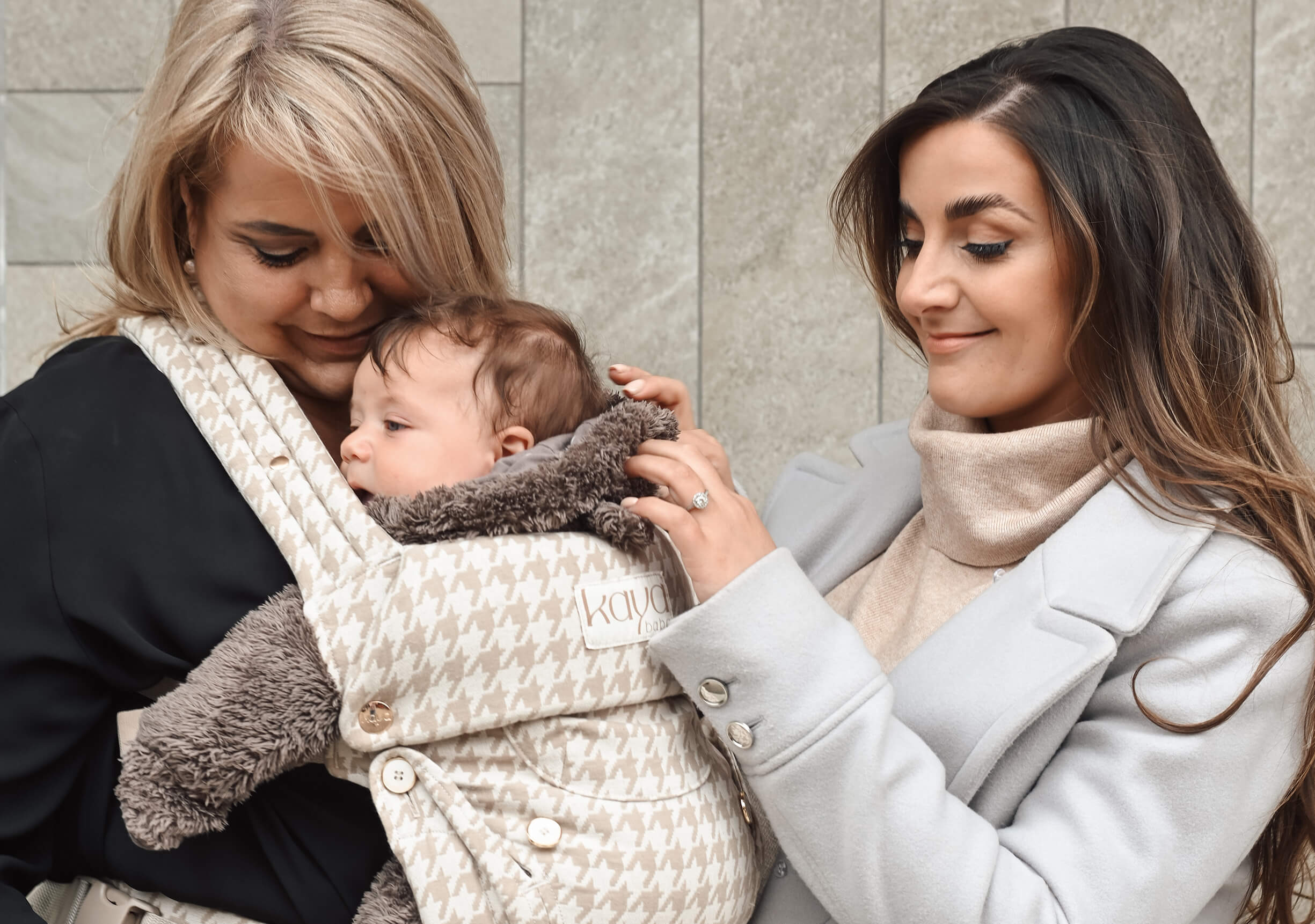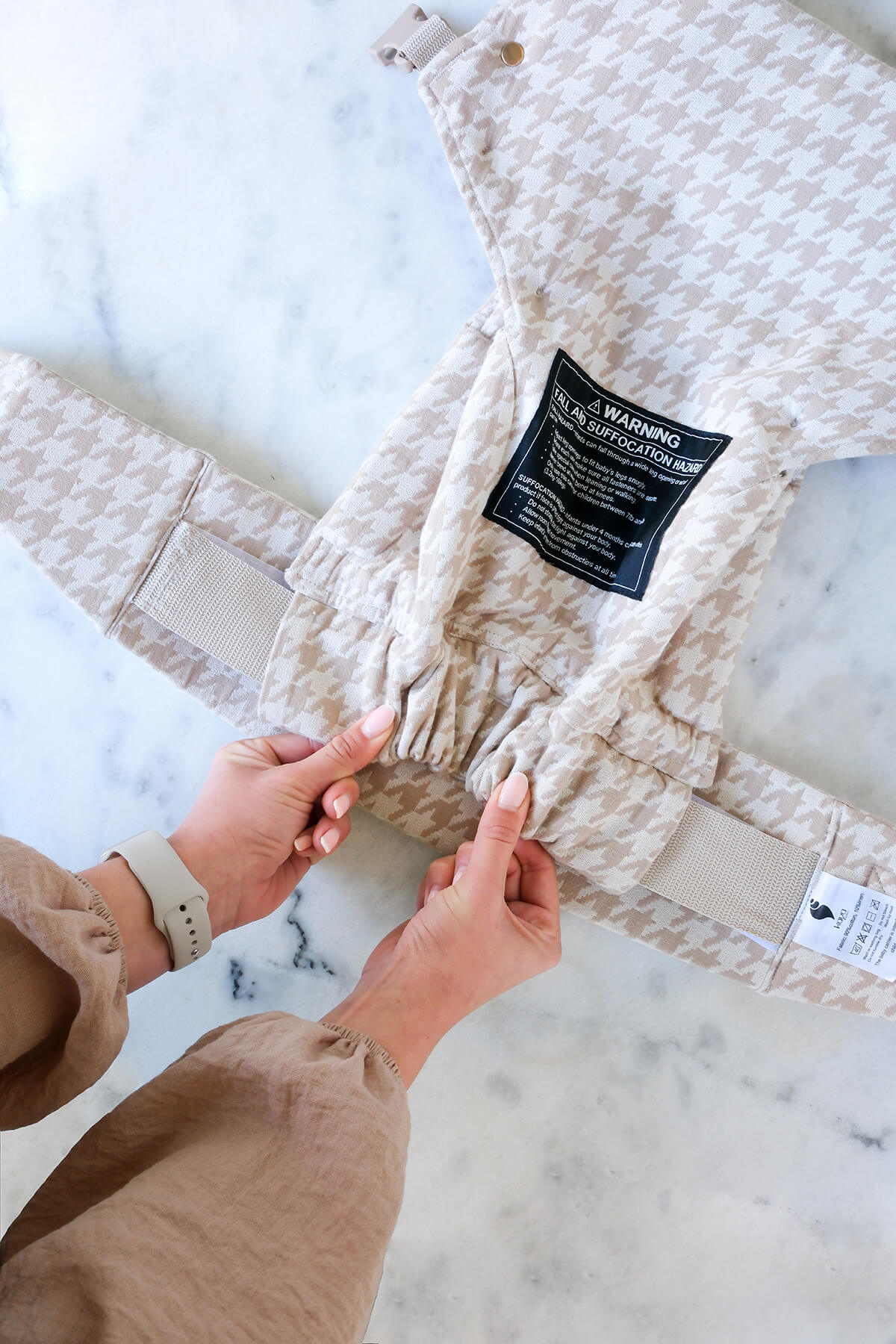
Instructions & Safety
Carry Position Instructions
-

Front Carry - Inward Facing
View Instructions -

Front Carry - Outward Facing
View Instructions -

Back Carry - Inward Facing
View Instructions

Adjusting your Kaya Carrier
Expertly designed to adjust to your needs. Explore the many ways in which the carrier can be adjusted to suit your little one's position.
Safety Instructions
-
Please read all the instructions thoroughly before using the carrier.
Use of this baby carrier is at your own discretion and risk. KAYA BABA is not liable for any injury, loss, or damage resulting from improper use or failure to follow the provided instructions and safety guidelines. Always ensure the carrier is used according to the recommended safety practices.
-
- Always make sure your baby’s nose and mouth are open and unobstructed
- Always check for secure fastening
- Before placing your baby in the carrier, ensure that all straps, buckles, and fastenings are securely tightened and adjusted properly
- Regularly check the carrier for any signs of wear, tears, or damage
- Discontinue use if the carrier appears damaged
- Ensure proper positioning
- Always ensure your baby is in a comfortable, ergonomic position with their hips properly supported
- The baby’s knees should be positioned higher than their hips to prevent hip dysplasia
- Keep your baby’s face visible and their airway clear - their chin should not be pressed against their chest, as this may restrict breathing
- Ensure there’s always at least a two-finger gap between the chin and chest
- Your baby should face towards you until they are able to hold their head up independently
- Dress your baby appropriately for the weather, considering the additional warmth provided by the carrier
- Check your baby frequently to ensure they are not overheating or too cold
- Ensure there is enough space for your baby’s head to move freely, and always keep their face clear of any obstructions
- Do not use this carrier while sleeping, driving, cooking, or working near hot surfaces
- Always keep the waistbelt secured until your baby is safely out of the carrier
- This carrier is designed for babies between 3.2 kg and 16 kg (Do not exceed the weight limit)
- Monitor your baby continuously while they are in the carrier.
Satefy T.I.C.K.S.
-
T — TIGHT
The baby carrier should hold your baby tightly against your body. A snug fit prevents unnecessary slumping, which could restrict your baby’s breathing.
The carrier should support the baby in an upright position, close to you, ensuring they are secure but comfortable. A well-adjusted, tight fit also helps distribute the baby’s weight evenly, preventing strain on your back and shoulders.
-
I — IN VIEW AT ALL TIMES
You should always be able to see your baby’s face without needing to move any fabric or adjust the carrier. Keeping your baby’s face visible ensures that their breathing remains unobstructed, and allows you to easily check on them at any time. Avoid any position where the baby’s face is covered or pressed against your body.
-
C — CLOSE ENOUGH TO KISS
Your baby should be positioned high on your chest, close enough for you to tilt your head and kiss the top of their head easily. This ensures they are not too low in the carrier, which could lead to breathing difficulties, especially for newborns. Keeping them close also strengthens the bond between you and your baby.
-
K — KEEP CHIN OFF THE CHEST
Your baby’s chin should never be pressed down onto their chest, as this can restrict their airflow. To prevent this, ensure there is always at least a two- finger space between their chin and chest. This keeps the airways open and allows for easy, safe breathing.
-
S — SUPPORTED BACK
Your baby’s back should be well- supported in a natural position. For newborns and young infants, their back should remain in a gentle, curved “C” shape, and the carrier should support them from the base of their neck down to their bottom. If you place your hand on their back, they should not slump or move away from your body, as this could compromise their airway.
Safety ‘M’ Position
-

M-Position
The ‘M’ Position ensures proper ergonomic posture and comfort for your baby.
-

Too Narrow
Adjust the carrier to a wider setting if your baby's thighs lack full support.
-

Too Wide
If fabric goes beyond baby's knees, set the carrier narrower for a better fit.






